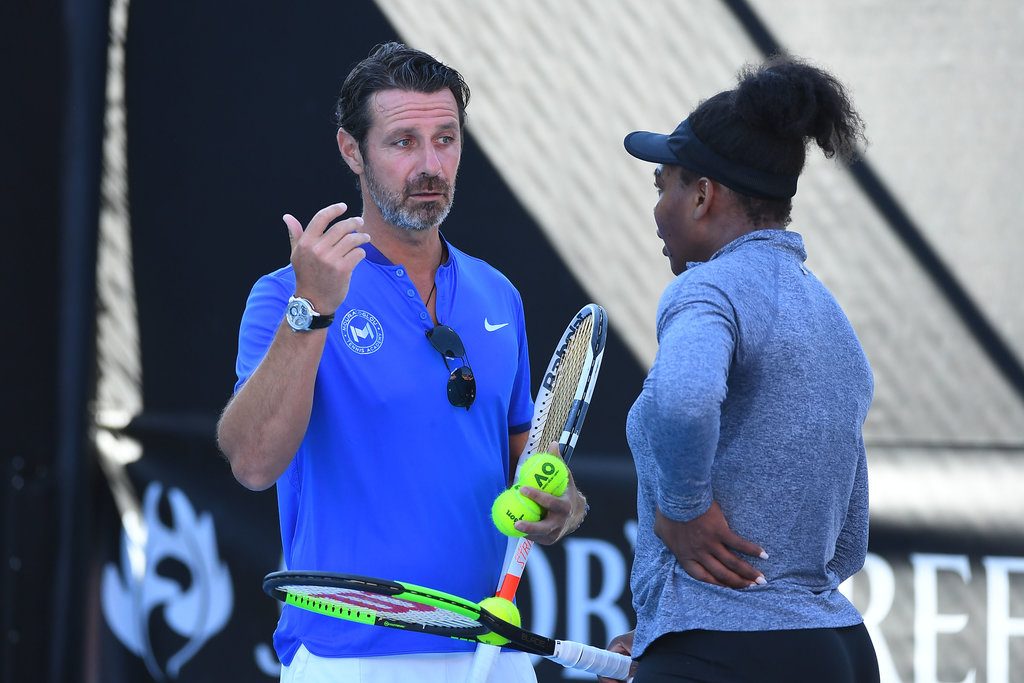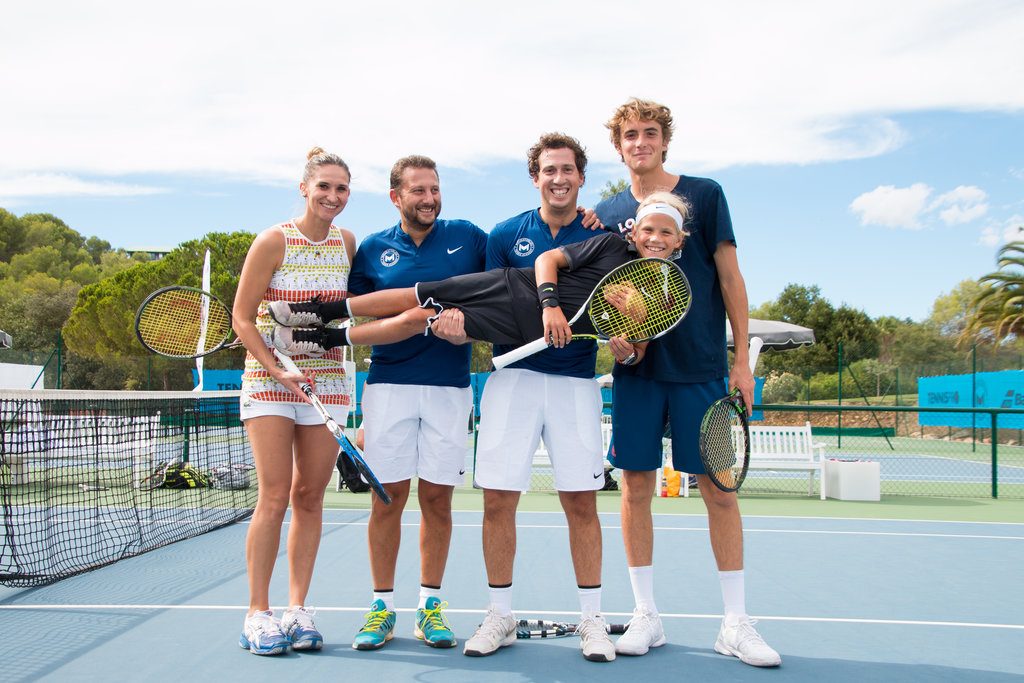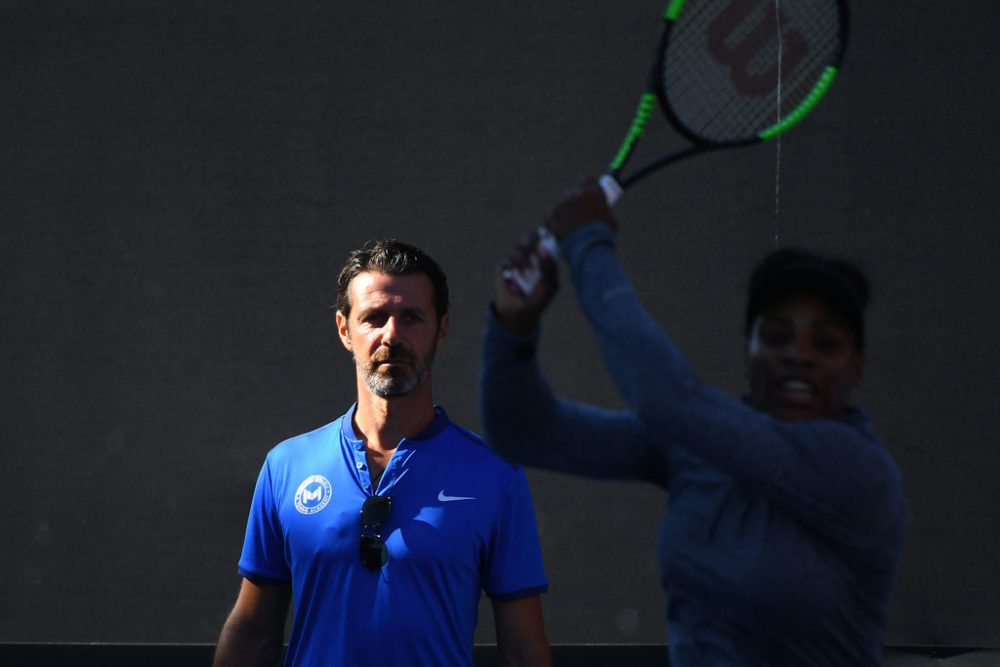by: Nima Naderi
After her dynamic performance at the Australian Open where she won her 23rd career Major and broke Stephanie Graf’s record, world No. 1 Serena Williams returns to action in Indian Wells this week with a sweep of March Madness on her mind (the Miami Open to follow). How will Serena perform in March to close out the hard-court season? We sat down with her long-time coach Patrick Mouratoglou as he prepares the American legend for the two important North American events.
In the interview below, Mouratoglou discusses Serena’s current mind set after winning in Australia and what they’ll need to do in order for her to continue her strong-hold on the WTA. Mouratoglou candidly provides great insight into Serena’s championship attitude and also discusses how he’s currently motivating and supporting future champions with his Champ’seed Foundation.

TC) Now that there has been a considerable break after Serena’s victory in Australia, how do you regroup mentally and physically for “March madness” in Indian Wells and Miami?
PM) The Australian Open was incredibly exhausting for Serena. Mentally, she was chasing her 23rd Major for sometime and the pressure on her shoulders was very high as she was in a position to change the history of the sport. The entire tournament (in Australia) was very difficult to handle. She obviously handled it very well but she might pay the price for it now. Also, it’s been very difficult to regroup after reaching such a high goal and finding new motivation. Serena has always been incredibly good at finding goals to motivate her. Every time she reaches a goal, she immediately sets a new one. For instance: When she won Roland Garros in 2013 after 11 years of trying to win it, she immediately came to me after the trophy ceremony and said: ”Now we have to win Wimbledon”.
But in this particular case of beating Graf’s record, it’s a bit more special. She finally achieved a goal that she was chasing for a long time. There has certainly been some time for her to decompress after Australia.
My role is to set new goals for her, challenge her, keep her interested and motivate her to the highest degree.
TC) What drills, fitness routines and equipment changes do you make when entering two big hard court tournaments in a row? How would you rate the differences in preparation between Indian Wells and Miami and does Serena need different sources of motivation for each event?
PM) First of all, Serena is a natural competitor. She hates losing and whatever tournament she enters, she wants to win the trophy.
Second, she loves to play in the US and both tournaments mean a lot to her. Indian Wells is special because of the history between her and the event. Her come back in 2015 after so many years was very emotional. She did not win in Indian Wells the last years, but did reach the semifinals and finals. I am sure that it is in her mind to get the trophy this year.
In Miami, we are in the opposite situation. She is “at home” (she lives in Florida) and she has won the tournament so many times that it is very special to her as well.
Regarding her preparation, it is similar to how we prepared for the Australian Open. Both are hard court tournaments and last one month (in Australia she played Auckland then one week of training, then two weeks of play at the Australian Open).
The only difference is that before Australia, Serena did not play for four months in a competitive environment. Now, I can reference back to how she performed in Australia, and I know what we need to work on in order to keep improving.

TC) Speaking of motivation and inspiring players, your new Champ’seed Foundation is a great initiative that you’ve started. Can you describe what this foundation means to you, what a player needs to qualify and the feeling you get when a Champ’seed player like Stefanos Tsitsipas begins to perform well on Tour like he did in Rotterdam and Marseille?
PM) Yes, I started the Champ’Seed Foundation in 2014, having the goal of helping young talented tennis players that do not have enough financial support to develop their talent and achieve their goals.
We select the players on the following two criteria: Their potential as tennis players and their financial situation. We started to work with our first group of players in 2015 and I am very happy and proud of them. They performed at the highest level. In 2016, Stefanos Tsitsipas reached world No. 2 in junior rankings and so did Oleysia Pervushina. Cori Gauff won the Orange Bowl Under 12 as well. In February, Dasha Lopatetskaya reached the final of “Les Petits As” in Tarbes and Holger Rune is the No. 1 ETA junior (in Europe).
Every year we organize training weeks at the Mouratoglou Tennis Academy to test the players. We have players come from everywhere in the world to try to be part of the Foundation. I would love to help all of them, but unfortunately we can’t so we have to make decisions. It is always heartbreaking but there is no other option at this time.















